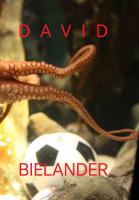Vanity, by Raphael Bielander
©2017 arnoldsche Art Publishers, Stuttgart, David Bielander, Munich, and the authors [and translators!] ISBN 978-3-89790-487-3.
Translation into English can be found in the enclosed booklet.
We find fault with the vanity of people who put their outward appearance, success and competence unpleasantly on show. We turn up our noses and poke fun. Despite this critical connotation, vanity enjoys high acceptance in the public realm. The modern media have discovered its entertainment value and push it by repeatedly inventing new formats for self-presentation.
I find vanity repugnant, too. That may be because I feel I am being manipulated. People claim my attention for their purposes; they demand applause from me – what for? I have to defend myself somehow, create distance – and so vanity also provokes contempt: I label it ‘narcissistic’ or simply find it ridiculous. There are phenomena of self-presentation that come across as neither ridiculous nor manipulative: for instance, when children put on jewellery, proudly show off their works, demonstrate newly acquired skills. This playful ‘delight in showing’ does not smack of narcissistic neediness, but rather of refreshing joie de vivre.
In the expressions ‘to be regarded’ and ‘to be sightly’, language recalls that the need for recognition has something to do with experience of eye contact in early childhood. The ‘twinkle in mother’s eye’ (Heinz Kohut), that is to say the attachment figure’s loving gaze, conveys to the infant fundamental justification of being, the certainty that he is okay the way he is; he gets permission to create himself and a desire to show himself. This natural vanity draws its energy from the Yes to life that the child received from his social environment in the beginnings of his existence.
In the adult, I take a favourable view of vanity when it remains true to childlike delight in showing, when beginner’s spirit can still be felt: curiosity, delight in playing, the ability to listen.
The vain adult who plays with self-presentation in a dialogical way finds and shows her colourful, authentic self experimentally while playing, and thereby makes the world a little more variegated too.
